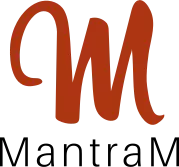Many of you may have heard (and for those who haven’t please read on) – but in December, Apple announced that it will allow users to opt-out of data tracking by early 2021. We have already started to see this message pop up on our screens for Facebook and Instagram ads.
 When it was announced, it sounded like an apocalypse for advertisers.
When it was announced, it sounded like an apocalypse for advertisers.
It was like the final “nail in the coffin” for an already dismal year for Facebook specifically.
But when you look closely enough, it may not be all that bad news for those using Facebook ads.
There are ways around this announcement:
Firstly, let us understand what this means for advertisers. How will this announcement impact clients and agencies alike?
- Impacts Tracking Pixel Actions from Facebook ads. Since people can opt out of tracking, pixel actions like Leads, Add to Cart, Purchases, custom conversions, etc. will now be under-reported.
- Limiting Optimization of Facebook Ads for these actions. We may not be able to optimize the ads because the pixel isn’t learning.
- Impacts Retargeting ads. When you create a Retargeting audience, the size will be small, as anyone who visited your website from an iOS 14 device won’t see your retargeted ad.
- Limits Building Audiences. Since we won’t have data on who visited your site from iOS devices, they will not go into a retargeting or lookalike audience. But there may be workarounds.
Additionally, Note that this change is ONLY for people using iOS devices when they update to iOS 14. Android and Desktop users can still track data and people who DON’T opt-out.
Table of Contents
ToggleHow are Advertisers Affected?
Also, ALL advertisers will be affected – Pinterest, LinkedIn, Snap Chat, TikTok, YouTube, and Google.
Of course, Google has another recent announcement about removing tracking from third-party cookies from Chrome by 2022, which will have more implications.
Consequently, all is not lost as, again, there will be workarounds as there always are☺
I always feel that these changes just force us to understand the platforms better and use the ads best to optimize everything towards the objectives within our means.
Besides, it’s the forever optimist in me, but that’s the way to adapt and move on.
We will still be able to get leads and sales and actions from iOS 14 devices, we just won’t be able to TRACK or optimize as well for those actions.
What ad objectives will be affected?
(anything that links ads to the website actions)
- Traffic Ads that are optimized around Landing Page Views (or use the Pixel). If we optimize around Link Clicks, ads will not be affected.
- Conversion Ads that are optimized around Standard Events or Custom Conversions
- Catalog sales when they go to your website (Facebook Shops and Instagram Shopping that stay on the platform will still be tracked)
The objectives not affected:
- Lead generation ads or activity that stays on Facebook will not be affected.
- Messenger ads
What this means for advertisers:
The performance will look worse than what it used to before, though we will still get leads and sales.
How to prepare your Facebook Ads for the Apple iOS 14 update
1. Domain Verification. You must use Facebook Business Manager to get the domain verified.
2. 2-factor authentication: Facebook requires this for personal accounts and for advertising.
3. Understand how many purchases/leads and other events are from iOS devices (use the Breakdown reports) to see how reporting might be impacted.
4. Limit to 8 optimization events – Choose which Conversion Events you will use if you have more than 8. This includes Add to Cart, Purchase, Lead, Complete Registration, and any custom conversions you have set up.
5. Focus on Lead gen and messenger ads so that you can rely less on Pixel optimization for retargeting.
6. Use Facebook API tracking as much as possible; WordPress is a great example of using the API to add the pixel, and there are similar other partners.
How to set up Domain Verification for Facebook
Domain Verification:
- Facebook has a tutorial on Domain Verification here: https://developers.facebook.com/docs/sharing/domain-verification
- There is more information about Domain Verification here: https://www.facebook.com/business/help/245311299870862
This step signals to Facebook that your domain is connected to your Business Manager, and you have control over your domain.
Things to note:
- You must be using the Facebook Business Manager to set up Domain Verification
- You must have control as admin of the website, or you won’t be able to do this step.
- You must be a full Admin in the Business Manager in order to walk through this process.
- There are 3 options you can use; you only have to do ONE of them – Meta tag, HTML tag, DNS verification (Meta tag is the easiest of them)
- Make sure you are the OWNER of that domain. Multiple Business Managers cannot verify the domain.
Recommendations and strategy moving forward
- Set up Domain Verification
- Set up 2-Factor Authentication
- Use API Tracking when possible
- Shift to “on Facebook ads” if appropriate – Lead Generation – Messenger
- Focus more on non-website Audiences – Customer Lists, Video Retargeting, Engagement
- Choose your 8 events
Questions that rise:
- How to set up 2-factor authentication
- Step by step tutorial for domain verification
- How to set up Business Manager
- How to set up events or even limit to 8 events
- How to use API tracking
- How to set up a lead ad within Facebook
- How to set up a messenger ad within Facebook
Recommendation
Indeed, we will happily schedule a 15-minute discovery call to understand where you are and what you need.
We certainly help customize the list of services we can help with and schedule time with you individually (with charges as relevant)
In that case, feel free to get in touch with us here.
Last Updated on April 24, 2024
Subscribe And Receive Free Digital Marketing Tips To Grow Your Business
Join over 8,000+ people who receive free tips on digital marketing. Unsubscribe anytime.




